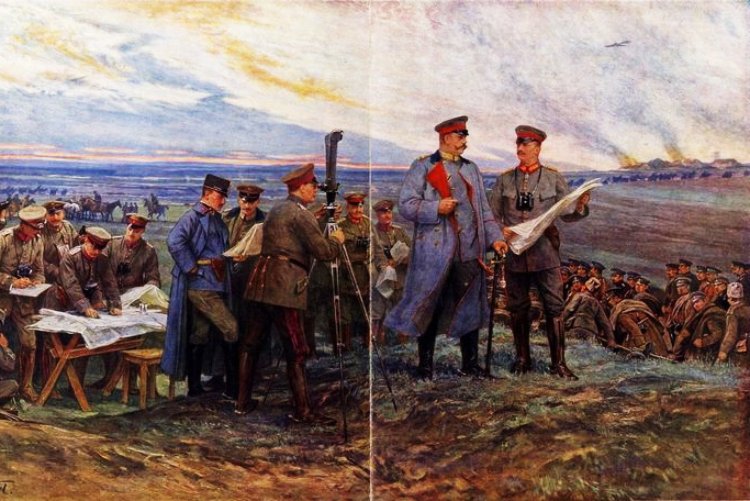A Look At Some Of The Famous Battles Of WWI
The legacy of WWI is trench fighting, chemical attacks, and the early use of submarines, airplanes, and tanks. With fighting on land, at sea, and increasingly in the air, WWI dragged on with few decisive victories for four years. It was also, up to that time, Europe’s most deadly conflict, with a loss of 20 million lives—and the bulk of fighting took place in some of these notable battles.

Battle Of Mons
The first conflict to involve multiple nations since the Battle of Waterloo in 1815, the Battle of Mons took place in Belgium on August 23, 1914, with a British force of about 75,000 fighting an estimated 150,000 Germans. The goal was to hold the Mons-Conde Canal.
 Unknown author, Wikimedia Commons
Unknown author, Wikimedia Commons
Battle Of Mons
This battle took place in the opening weeks of WWI. The British were overpowered and retreated. This was a victory for Germany, giving rise to the belief in Germany that this would all be over in a matter of months. There were a combined 6,600 losses on both sides.
 Champagnepapi22, CC BY-SA 4.0, Wikimedia Commons
Champagnepapi22, CC BY-SA 4.0, Wikimedia Commons
Battle Of Tannenberg
Another victory for Germany, this was the German Empire’s biggest win on the Eastern Front against Russia. From August 26 to August 30, 1914, the Russians advanced on the Germans in what was then German East Prussia (now Poland). At first, the Russians had the upper hand, with Germans briefly retreating from their positions.
Battle Of Tannenberg
The Germans intercepted unencrypted radio messages from the Russians and were able to reorganize their strategy with the knowledge of Russian plans. This forced the Russians into retreat, with the Germans in pursuit. The Russians suffered losses of around 30,000, with another 90,000 taken prisoner.
 Ray Mentzer, Wikimedia Commons
Ray Mentzer, Wikimedia Commons
First Battle Of The Marne
With German victories in the first months of WWI, it appeared that this would be a short conflict with the Allied forces giving up the fight. Between September 6-12, 1914, the First Battle of the Marne took place 30 miles from Paris. This marked the first significant Allied victory, and the British were able to stop Germany’s advance into France and its capital.
 Unknown Author, Wikimedia Commons
Unknown Author, Wikimedia Commons
First Battle Of The Marne
The Germans were divided between the Western and Eastern fronts, and they were exhausted and weakened. With the British advances, the Germans were forced to retreat to the Lower Aisne River where the first conflict of WWI had taken place a few months before.
First Battle Of Ypres
Access to the Flemish city of Ypres on Belgium’s north coast was vital for British ships coming across the English Channel. The first of three battles in Ypres, it took place from October 19 to November 22, 1914. It was the biggest battle so far, with the Germans numbering 600,000 against the 420,000 Allies.
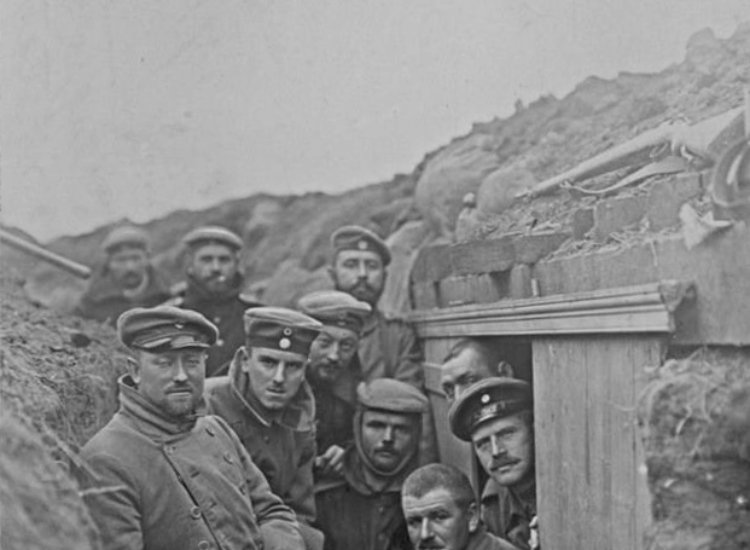 Unknown Author, Wikimedia Commons
Unknown Author, Wikimedia Commons
First Battle Of Ypres
There was an early cold snap, and the fierce fighting dragged on for three weeks. The onset of an early winter brought the battle to an end, with both sides dug in for trench fighting that would lead to massive casualties—164,500 French, British, and Belgian losses and 80,000 German. Despite those numbers, neither side made any significant gains in the battle.
 Swiss Federal Archives, Wikimedia Commons
Swiss Federal Archives, Wikimedia Commons

History's most fascinating stories and darkest secrets, delivered to your inbox daily.
Battle Of Dogger Bank
On January 24, 1915, the British naval fleet met German naval forces in the North Sea. A German encrypted message had been intercepted and decoded, giving away the German positions. This attack was the Battle of Dogger Bank.
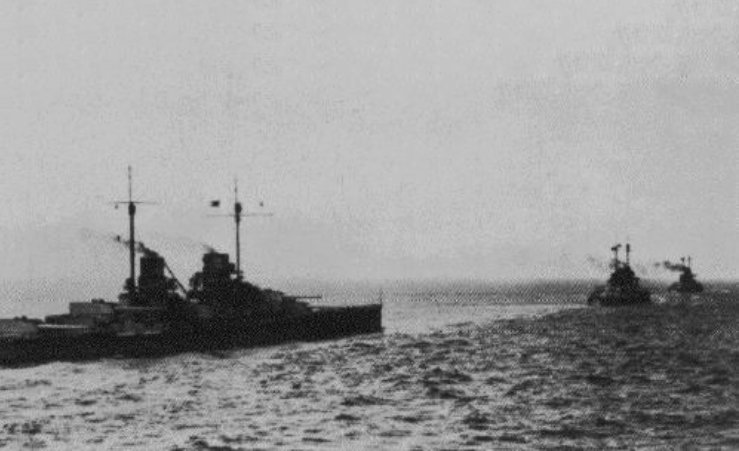 Unknown Author, Wikimedia Commons
Unknown Author, Wikimedia Commons
Battle Of Dogger Bank
The German forces were smaller and were forced to retreat. However, they were unable to outrun the British. Long-range fighting ensued with both a German and a British ship lost. Like the pattern introduced by the land battles, this naval battle ended with a stalemate.
 International Film Service., Wikimedia Commons
International Film Service., Wikimedia Commons
Battle Of Verdun
The Battle of Verdun lives on in history as the longest battle of WWI, from February 21 to December 18, 1916, and one of the costliest. A surprise German offensive was fended off by the French at a cost of a combined total of more than 306,000 lives. The Germans took on the French defenses of the Fortified Region of Verdun, with a plan to capture the Meuse Heights.
 Unknown Author, Wikimedia Commons
Unknown Author, Wikimedia Commons
Battle Of Verdun
This would put the Germans in a strong defensive position with the ability to fire artillery at Verdun. The Germans hoped that the French would commit the bulk of their forces to recapture the fort at the Meuse Heights, with heavy losses and weakening French morale.
 Photographisches Bild- und Film-Amt, Wikimedia Commons
Photographisches Bild- und Film-Amt, Wikimedia Commons
Battle Of Verdun
The battle was costly to both sides as the Germans found it difficult to overrun the French. By July 1916, the Germans had no choice but to call off their advance. As the winter set in, the French regained the stronghold and as the first Battle of the Somme began, the fighting at Verdun came to an end.
Battle Of The Somme
On the first day of the Battle of the Somme, Britain lost 20,000 lives, 57,000 casualties in total. The British objective was to overrun German trenches while the French were busy with the Germans at Verdun. The Germans were not easily defeated and advancing British forces were easily taken down in the open no-man’s land.
Battle Of The Somme
With such losses in such a short period of time, the Allies began to shift their tactics. The goal had been a German retreat with the Germans eventually being forced back onto German soil. The Allies’ new strategy against German intransigence was to dig in and try to get the Germans to exhaust their forces and supplies.
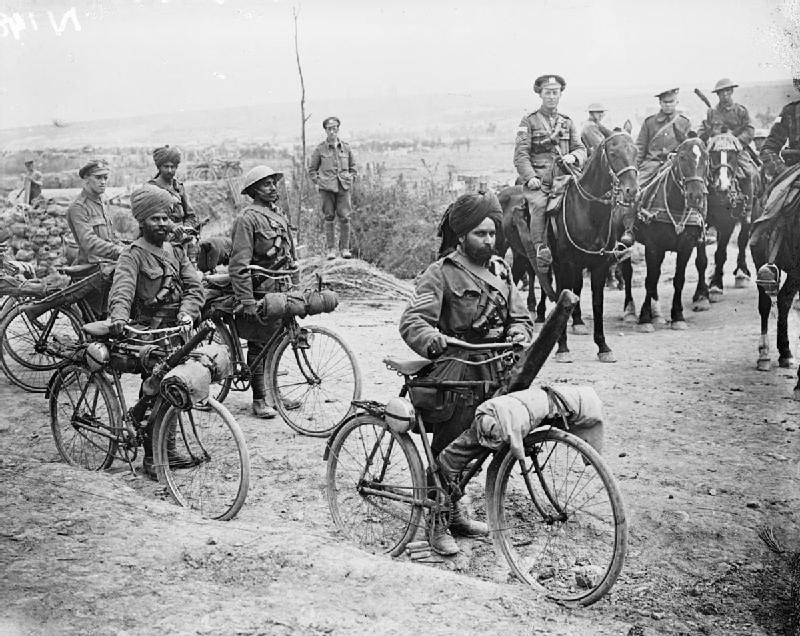 John Warwick Brooke, Wikimedia Commons
John Warwick Brooke, Wikimedia Commons
Battle Of The Somme
The Battle of the Somme was fought from July 1 to November 13, 1916, and became a symbol of the futility of fighting in the trenches. As the battle raged from the early summer and into the fall, the weather became a significant factor in increasing the misery both sides were facing. The Battle of the Somme is notable for the first use of tanks, and when the fighting finally ended, there were more than one million casualties.
 Ernest Brooks, Wikimedia Commons
Ernest Brooks, Wikimedia Commons
Battle Of Gallipoli
The Ottoman Empire was one of the Central Powers, a coalition that also included the German Empire, Austria-Hungary, and Bulgaria. They were in conflict with the Allies, or the Entente, a coalition of countries including France, the United Kingdom, the Dominions of the British Empire (Canada, South Africa, Australia, New Zealand, and Newfoundland), Russia, the United States, Italy, and Japan.
 Ernest Brooks, Wikimedia Commons
Ernest Brooks, Wikimedia Commons
Battle Of Gallipoli
Much of WWI took place on the Western and Eastern fronts of Europe, but there were other theaters of action, including Southern Europe and the Middle East. In what historians consider the first major beach landing, Allied forces (France, Britain, Australia, New Zealand, India, and Newfoundland) invaded the Ottoman Empire. The objective was to seize the Ottoman city of Constantinople, and the ensuing Battle of Gallipoli lasted from February 19, 1915, to January 9, 1916.
 Unknown author, Wikimedia Commons
Unknown author, Wikimedia Commons
Battle Of Gallipoli
Controlling Constantinople would mean controlling the sea route at the eastern end of the Mediterranean Sea. The fighting at this point was stalled on the Western front and the Allies were hoping for a swift victory at Gallipoli. However, the Ottomans, supported by Germany and Austria-Hungary, forced the Allies to withdraw at the cost of 180,000 servicemen, 28,000 of which were Australians.
 Lieutenant Reginald Arthur Savory, Wikimedia Commons
Lieutenant Reginald Arthur Savory, Wikimedia Commons
Battle Of Jutland
The Battle of Jutland was WWI’s biggest naval conflict. Taking place from May 31 to June 1, 1916, off the coast of Denmark, this was actually the only real face-off between German and British battleships. Naval action was mainly characterized by blockades and submarine attacks, with large-scale actions at a minimum.
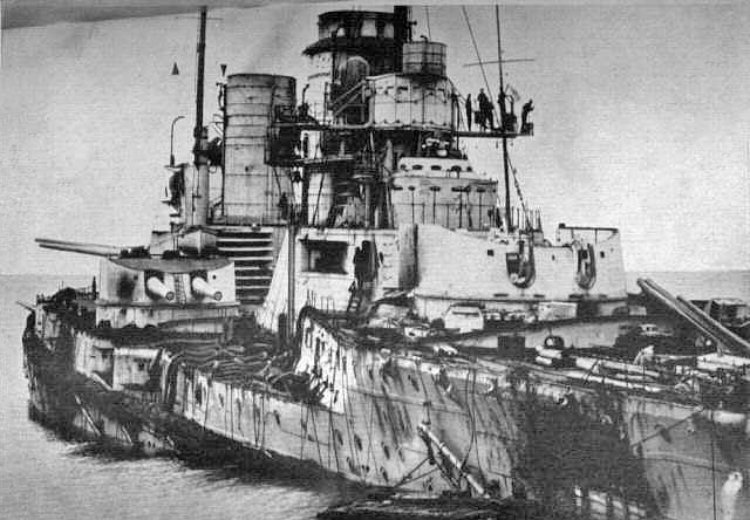 German Government, Wikimedia Commons
German Government, Wikimedia Commons
Battle Of Jutland
German forces confronted the British Royal Navy, and the ensuing battle included 250 ships and 100,000 men. Both sides lost thousands of lives and several ships. There was no clear victor but Britain was able to secure shipping in the North Sea and continued to block German ports.
 Unknown Author, Wikimedia Commons
Unknown Author, Wikimedia Commons
Battles Of The Isonzo
While much of WWI was a back-and-forth between the Allies and the Central Powers on the Western Front, it was crucial to attack the heart of the Austro-Hungarian Empire. WWI began with the assassination of the heir to the Austro-Hungarian throne but since then, the more powerful German Empire dominated the fight.
 Kriegspressequartier, Wkimedia Commons
Kriegspressequartier, Wkimedia Commons
Battles Of The Isonzo
Part of the Allied Forces, Italy was concentrated mainly on breaking through the Austrian lines at the Isonzo River at the Adriatic Sea. The 12 Battles of the Isonzo took place from June 23, 1915, to October 24, 1917, and gaining control of this area would provide entry to Vienna. Italy began to make progress against the Austrians but soon Germany joined the battle and Italy was forced to retreat.
 Italian Army Photographers, CC BY 2.5, Wikimedia Commons
Italian Army Photographers, CC BY 2.5, Wikimedia Commons
Battle Of Passchendaele
The Battle of Passchendaele (July 31 to November 6, 1917), also known as the Third Battle of Ypres, took place in Ypres, Belgium. British and French forces, with the use of tanks, confronted the Germans at Ypres, taking control of the area. For four months, each side fought back and forth, with much of the fighting taking place in the rain and mud of the trenches.
 Frank Hurley, Wikimedia Commons
Frank Hurley, Wikimedia Commons
Battle Of Passchendaele
Canadian forces were brought in to relieve the British and French, but little changes in ground gained. Considered a victory for the Allies, that victory came at a cost of over 550,000 casualties.
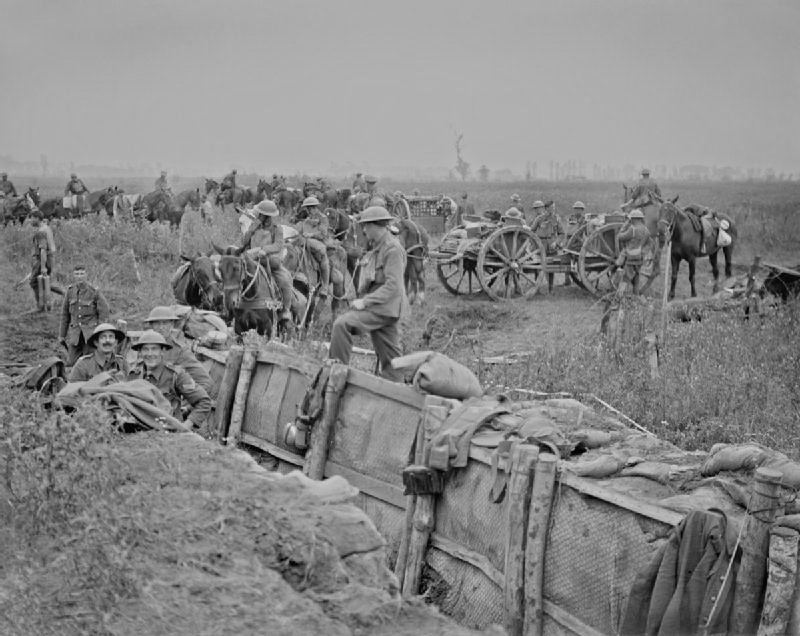 Ernest Brooks, Wikimedia Commons
Ernest Brooks, Wikimedia Commons
Battle Of Vimy Ridge
Up to this point, the Canadian forces had been split into smaller units in support of the British. For the Battle of Vimy Ridge, which took place between April 9-Apr 12, 1917, Canadians fought as a unified force. Four Canadian divisions launched an attack at Vimy Ridge in Northern France.
 Library and Archives Canada, Picryl
Library and Archives Canada, Picryl
Battle Of Vimy Ridge
The Canadian victory is swift and decisive. In three days, Germans are repelled by the Canadians. This marks a turning point for Canada, marking the Canadian Corps as an elite force. Vimy Ridge was part of the larger Battle of Arras and new artillery tactics were devised by the Canadians and utilized elsewhere in the fighting.
 Canada. Dept. of National Defence, Wikimedia Commons
Canada. Dept. of National Defence, Wikimedia Commons
June Offensive
The beginning of the end of the Russian forces in WWI, the June Offensive started on July 1, 1917, and lasted three days. Russian forces confronted the Austro-Hungarians and Germans in Galicia, ordered by the Russian Government Minister Alexander Kerensky. Back in Russia, there were popular calls for peace in a conflict few Russians thought was important for them.
 Unknown author, Wikimedia Commons
Unknown author, Wikimedia Commons
June Offensive
There were some early Russian gains, but soon Russian forces suffered mass casualties. The Russians began to revolt. Overtaken by the Austrians and Germans, the Russian forces essentially fell apart. By October, Russia was engulfed in a revolution and they and the Central Powers signed a truce.
 Austrian National Library, Wikimedia Commons
Austrian National Library, Wikimedia Commons
Second Battle Of The Somme
Along the Somme river basin in France, the Second Battle of the Somme took place from March 21 to April 5, 1918. Launched by the Germans hoping to take advantage of the Russian withdrawal from WWI, the Germans took on the British using artillery and gas.
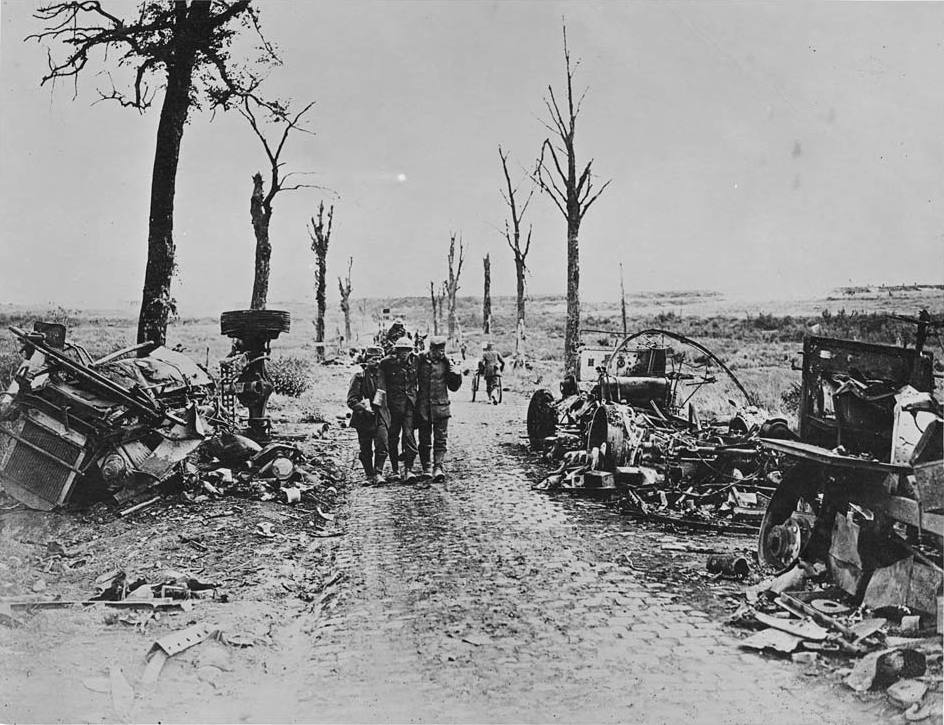 National Library of Scotland, Wikimedia Commons
National Library of Scotland, Wikimedia Commons
Second Battle Of The Somme
The British retreated and this marked Germany’s single biggest gain of territory along the Western Front. However, within weeks, the Allies regrouped, and the German offensive was eventually halted.
Ludendorff Offensive
The Ludendorff Offensive (March 21 to July 18, 1918) started with the Germans launching a string of attacks along the Western Front. The hope was that they could win before US forces joined the Allies. The attacks were an initial success, and the Germans gained new territory.
 Bundesarchiv, CC-BY-SA 3.0, Wikimedia Commons
Bundesarchiv, CC-BY-SA 3.0, Wikimedia Commons
Ludendorff Offensive
There were few real strategic gains with this victory, however. The Americans arrived in July, launching a counteroffensive. The exhausted German forces were badly weakened.
 Imperial War Museums, Wkimedia Commons
Imperial War Museums, Wkimedia Commons
Second Battle Of The Marne
The Second Battle of the Marne (July 15-18, 1918) was the last German offensive attack against the Allies. The Germans struck Allied forces near the Marne River in France's Champagne region. This was meant as a diversionary tactic, to lure the Allies into a separate planned attack in Flanders.
 Bundesarchiv, CC BY-SA 3.0, Wikimedia Commons
Bundesarchiv, CC BY-SA 3.0, Wikimedia Commons
Second Battle Of The Marne
A series of fake trenches implemented by the French fooled the Germans and they were met with heavy fire. A counterattack by French and American forces took place. The Allies reached the German trenches but were forced to retreat.
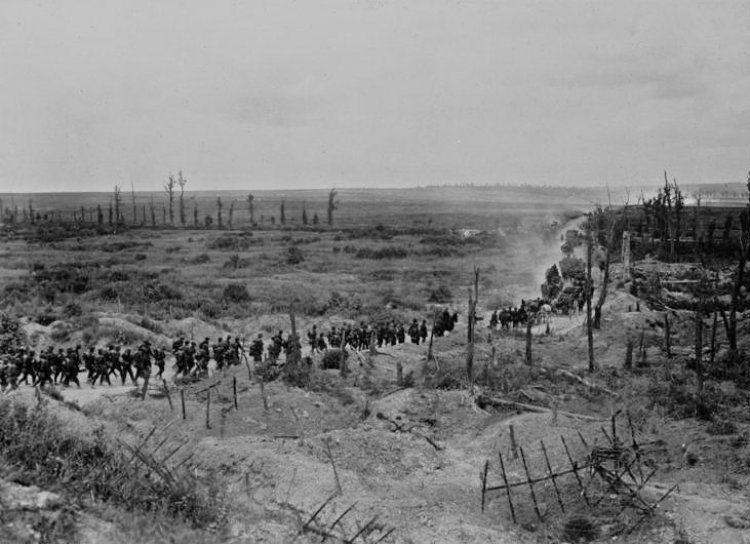 Bundesarchiv, CC-BY-SA 3.0, Wikimedia Commons
Bundesarchiv, CC-BY-SA 3.0, Wikimedia Commons
Battle Of Amiens
What is sometimes called the Hundred Days Offensive, the Battle of Amiens is one of the most successful advances in WWI. From August 8-11, 1918, Allied forces secured more than eight miles on the first day. Germans called this the “black day” of the German forces.
Battle Of Amiens
In a surprise attack, the Allies launched an offensive that included 1,900 planes and 500 tanks. The result was large-scale German casualties, damaging German morale.
 Imperial War Museums, Wikimedia Commons
Imperial War Museums, Wikimedia Commons
Second Battle Of Mons
November 11, 1918 was the last day of WWI. Germany, facing revolution at home and with the abdication of German Emperor Wilhelm II, agreed to an armistice at 11 am that day. The last battle of WWI also took place on that day.
 Canadian Official photographer, Wikimedia Commons
Canadian Official photographer, Wikimedia Commons
Second Battle Of Mons
The Canadian Corps captured Mons, Belgium which had been held by the Germans since 1914 at the earlier Battle of Mons. The offensive took place in the early morning, hours before they were to learn of the 11 am armistice. At that moment in time, WWI ended—but not before a Canadian lost his life one minute before 11 am.


